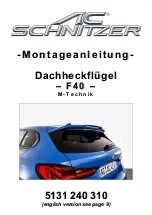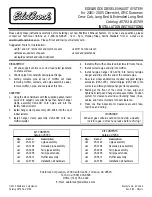
12.12.2 Description and Operation
12.12.2.1 Safety Instructions
When carry out body sheet metal repairs, you must strictly
follow the safety instructions as below:
1. When carry out body sheet metal welding, cutting, grinding
operation, you must wear protective clothing, protective
goggles, gloves and working shoes.
2. The welding area must be well ventilated.
3. Before carry out welding, you must disconnect the battery
negative cable and cover the battery negative terminal.
4. If a spark may be produced when carry out welding near a
battery, you must remove the battery.
5. Before remove vehicle components, you must lift and
support the vehicle on a hoist to avoid the vehicle gravity
center changing affecting operational safety.
6. When connect the welding equipment ground cable directly
to the parts to be welded, you must ensure that no
conductive parts between ground and the welding spot.
7. The ground cable and the welding electrodes must not
come into contact with the electronic control unit or the
wires.
8. An unprotected vehicle must not be parked in the welding
repair area, as the welding sparks could trigger a fire,
damage to the vehicle body paint or the windows.
9. When grinding or welding near a fuel tank or other fuel
containers, you must be extra careful and remove any
suspicious components that may affect the safety.
10. You must not weld, braze or solder any components of
refrigerant air conditioning systems, or weld components
that may cause air-conditioning system temperatures rise,
as this may lead to air-conditioning system explosion. If the
refrigerant hose must be near the welding area, you must
recycle refrigerant, as welding generated ultraviolet is not
visible and will penetrate the refrigerant hose causing
refrigerant decay.
11. When carry out airbag system calibration, you must
disconnect battery negative cable. The airbag components
ambient temperature must not exceed 100°C (212 ºF).
12.12.2.2 The State of Parts
Before deliver the repaired vehicle or components to the paint
shop for painting, all the surface must be even, all the seals
must be filled and the surface must be polished with sand
paper. The preparation process must be completed by the
sheet metal repair technician. Body and floor components are
mainly formed by steel pressing, so the damaged components
must be restored with the same approach. If a damaged
component can not be restored, its adjacent components
should be adjusted. Remove the damaged component.
Replace components to protect the integral structure. Do not
cut a single component, as cutting and welding will affect the
vehicle body stiffness, driving safety and maintenance
convenience.
12.12.2.3 Welding Types Description
Commonly used welding types are spot welding, gas shielded
welding and brazing. During spot welding, you must not reduce
the number of solder joints. If the spot welding can not be used,
drill and use gas-shielded welding. When using spot welding,
if it is to connect three-layer panels, only replace the outer
panel, then weld on the original solder joints. When using spot
welding, you can weld single seam, double seams, double
biased seams. When using gas-shielded arc welding, you can
carry out overlap welding, continuous welding and intermittent
welding. Brazing is commonly used in welding and repair low
tensile strength components, or areas with small thickness.
12.12.2.4 Anti-Corrosion Treatment
1. After repair, you must use approved materials to restore the
anti-corrosion coating .
2. Before apply the sealant, all welding seams must be coated
with primer inside and outside.
3. Primer coated metal sheet panels must be applied with
sealant.
4. Overlapping pieces of sheet metal, metal edge, welding
joints and weld seams must be applied with sealant.
5. The vehicle underbody must be applied with long lasting
coating agent.
6. After spray painting, you must use cavity protection
materials to treat cavities in the area.
7. After the cavity protective material is dry, clean the water
ducts.
12.12.2.5
Scrapped
Components
Environmentally Friendly Disposal Approach
1. After maintenance or repair, collect different type of waste
materials separately.
2. Separate the waste materials and check whether the
materials can be reused.
Body, Sheet Metal and Painting
Collision Repair
12-137
EC718/EC718RV EC715/EC715RV 10/2009
Summary of Contents for EC715 2009
Page 4: ......
Page 330: ...Next Step 10 End 2 248 Fuel System JL4G18 D Engine EC718 EC718RV EC715 EC715RV 10 2009 ...
Page 1164: ......
Page 2008: ......















































